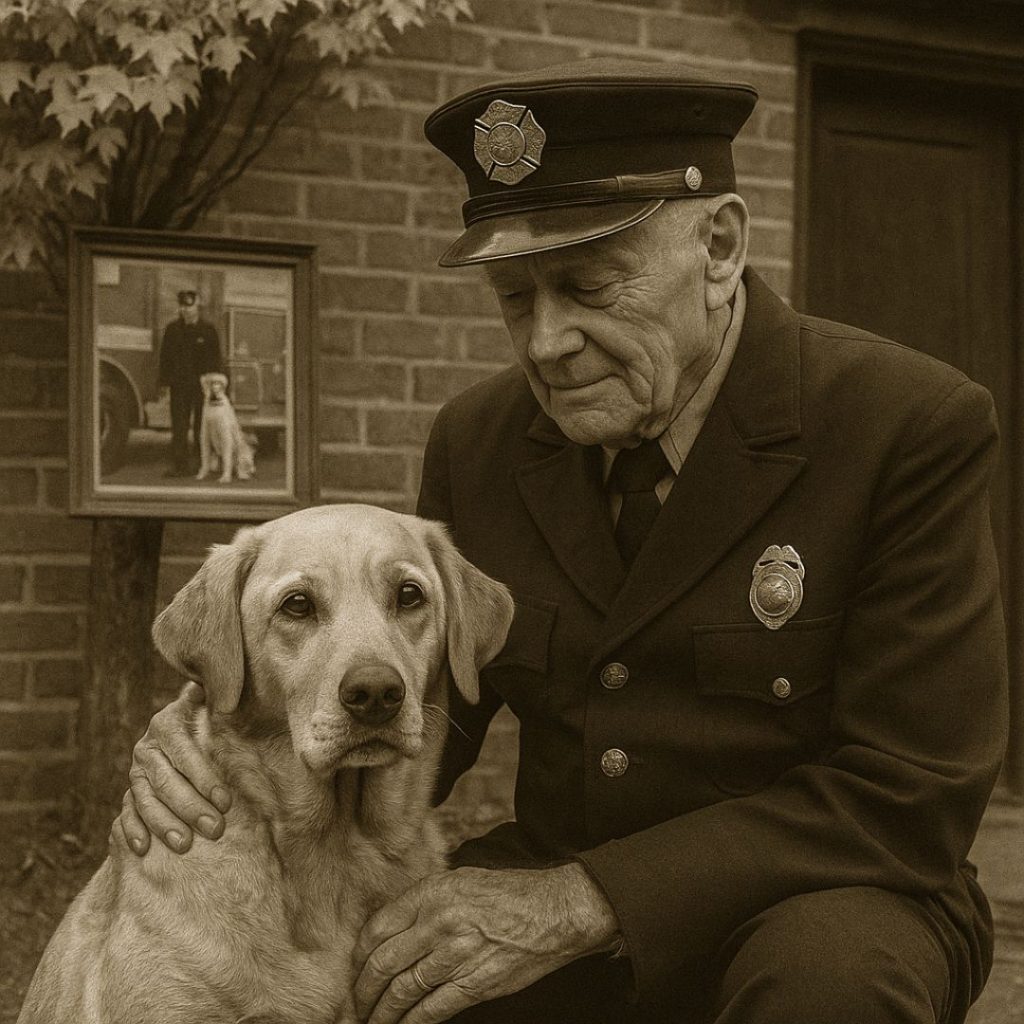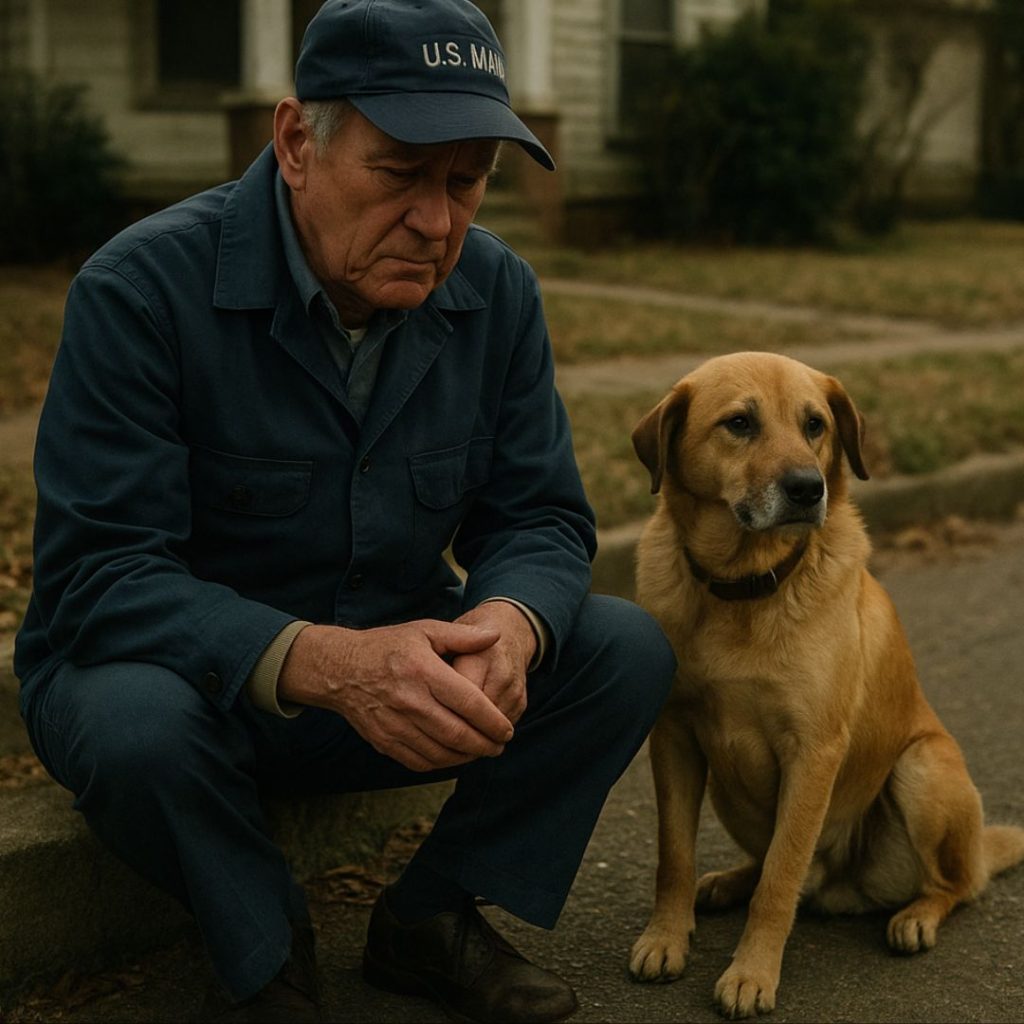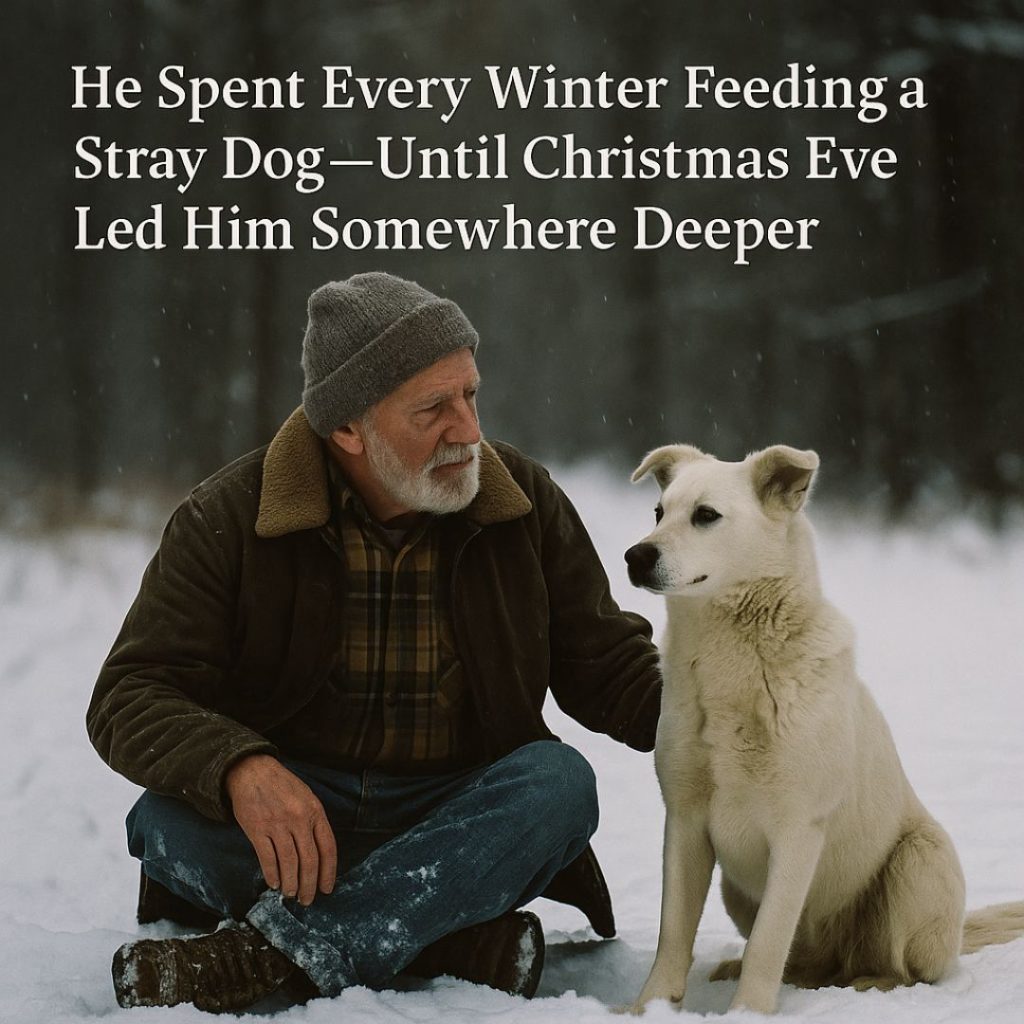📖 Part 7: Carried in Their Hearts
The first time I saw the patch, I cried.
It was stitched onto the left shoulder of a little boy’s jacket at Lincoln Charter. A circle of gold thread around a flame, and inside it—just one word:
EMBER.
I asked where he got it.
He smiled shyly. “My big sister made it for our class. We all wear one now.”
When I looked around, I saw them—on backpacks, pinned to pencil cases, stitched into scarves.
Kids I’d never met, in places Ember never walked, were carrying him.
It was like he had multiplied.
Not in body—but in spirit.
The Ember Project grew faster than I ever expected.
With the help of my firehouse buddy, Dale Kimsey—now the department’s community outreach coordinator—we created a small traveling exhibit. It included Ember’s vest, his framed photo, my old helmet, and handwritten notes from children.
We called it “Bravery You Can Hold.”
It moved from school to school, and I followed when I could.
Each time, I met children with stories.
At a school in Fayetteville, a boy told me how his home caught fire last winter. “I remembered what you and Ember said,” he said proudly. “I got my little brother out, and we called 911.”
At a middle school in Winston-Salem, a girl who barely spoke English showed me a drawing—her standing beside a black dog in front of a burning house. In the sky above them, the word “safe” in huge red letters.
I didn’t need translation.
I’d begun keeping a journal—something I’d never done as a younger man.
Each night, I wrote one page.
Not of what I had said that day, but what the kids had shown me. Their bravery. Their hearts. The soft ways they loved a dog they never met.
And sometimes, I’d write to Ember.
Not aloud. Just quietly, on paper.
Like:
“You should’ve seen them today, buddy. One kid crawled under the desk to comfort a scared classmate. Reminded me of how you used to find the ones who were hurting. You were always better at that than I was.”
Then came the invitation.
A letter on thick cardstock, gold trim around the edges.
The National Firefighting Honors Association
Annual Ceremony – Washington, D.C.
Special Recognition: Ember, Posthumous Award for Public Safety Impact
I stared at it for a long time.
Not because I doubted he deserved it.
But because it made everything feel real.
He was gone.
Truly gone.
But now the world knew what I had known all along.
At the ceremony, I wore my dress blues. They barely fit, but I wore them anyway. On the podium, beside my notes, stood Ember’s photo. A smaller version of his vest was draped over the front of the podium.
I didn’t speak from a script.
I just told the truth.
That courage doesn’t always bark or chase fire trucks.
Sometimes, it just lies beside a frightened child and stays.
That love doesn’t die in flames—it rises from them.
And that one dog—left behind in the smoke—brought more light to this world than I ever did with a hose in my hand.
Afterward, a man in a wheelchair rolled up to me. His voice was rough, but his eyes were warm.
“Vietnam vet,” he said, offering a weathered hand. “Lost my service dog two years ago. Your story… it brought him back for a little while.”
I nodded, holding back the lump in my throat. “Thank you for your service.”
He smiled. “No. Thank you for his.”
On the train ride back to Wilmington, I watched the countryside roll by and thought of all the places Ember never got to go. The faces he never licked, the hands he never comforted.
And yet… he had been there.
Through them. Through every kid, every story, every act of quiet courage.
He was everywhere now.
Not as fur and bone—
But as memory.
As firelight.
As legacy.
When I got home, the mailbox was full. Letters from schools, drawings from children, and one thick envelope from Grover Elementary.
Inside was a class project titled:
“If I Were Ember…”
Each child had written a short paragraph.
“I’d sit with the new kid at lunch.”
“I’d help people who are scared of loud noises.”
“I’d be brave, even if I was small.”
“I’d protect people, even when I’m tired.”
And at the very back, a card from Jordan.
A photo of him standing in front of the animal shelter, now wearing a volunteer badge.
His note read:
“I think I found my fire.
It’s not scary.
It’s just love that knows where to go.”
I sat down on the porch, the card in my lap, and whispered:
“You’re still doing it, aren’t you, boy? You’re still teaching us how to burn bright… and gentle.”
📖 Part 8: The Flame That Traveled
Autumn crept in with golden light and cool mornings. The sugar maple behind my house—the one that shaded Ember’s resting place—turned the color of his eyes when he was young: deep, warm amber.
I found myself sitting out there more often.
Not in mourning. Not anymore.
But in memory.
Sometimes I’d read letters. Other times I just sat in silence and listened to the breeze rustling through the leaves.
And every once in a while, a squirrel would run across the yard, freeze halfway to the tree, and dart off like it used to when Ember gave chase.
I chuckled every time.
Still chasing them, huh, boy?
One morning, I received an email from a teacher in South Dakota. Her message was simple:
“We heard Ember’s story. Would you consider visiting?”
I nearly said no. The drive was long. I was no spring chicken. But something pulled at me.
So I packed the truck.
I took the framed photo, the worn vest, and the corkboard that had now become more patch than board.
The drive took three days. I passed cornfields, mountains, endless highways. Slept in roadside motels with thin blankets and thicker silence.
And I thought of Ember the whole way.
How he would’ve sat in the back seat, chin on the armrest, ears twitching at passing trucks.
How he’d look at me in the mirror and remind me we were never alone.
The school in South Dakota was small—just two classrooms and a hallway painted with handprints. The teacher who invited me, Ms. Rayburn, met me at the door. She was short, round, and had a smile like sunshine after a storm.
“You actually came,” she whispered, her voice catching. “You really came.”
She led me to the children—some Native, some white, all with eyes that had seen more than they should have at their age.
I told them Ember’s story.
Not just the fire. Not just the classroom visits.
But the silence he brought with him. The kind that wrapped around hurt and held it.
When I finished, a boy stood up. His name was Tyler. Maybe nine years old.
“My dad’s in prison,” he said, matter-of-fact. “But my mom says dogs know who’s good.”
I nodded.
“Was Ember ever scared?” he asked.
“Every day,” I said. “But he never let fear stop him from being kind.”
Tyler sat back down, thinking hard.
Later, Ms. Rayburn pulled me aside.
“His father was arrested during a house raid. Tyler saw it all. He doesn’t trust men much.”
I looked back toward the boy.
He was staring at Ember’s picture. Smiling.
That night, Ms. Rayburn gave me a blanket to sleep on in the school library. I didn’t mind. The walls were lined with children’s books and construction-paper stars.
I lay there under Ember’s vest, looking up at the ceiling, and whispered:
“You still with me, partner?”
The silence felt like a nod.
When I got back to Wilmington, a letter was waiting for me. Handwritten, elegant cursive.
It was from Clarissa—the woman who managed the apartment building on Porter Street.
She wrote:
“We’ve started an Ember Day every February. The kids wear red and gold, and we read your story aloud. They plant flowers under the window where you pulled him from the fire. You’re always welcome.”
Underneath, in a child’s handwriting:
“Thank you for saving the dog who saved us.”
February came quickly.
I drove to Porter Street that morning, vest and photo in hand. The apartment courtyard was filled with red paper flames and little drawings taped to the walls.
Dozens of children gathered near the sugar maple they’d planted in Ember’s honor. Small and fragile, but standing tall.
They asked me to speak.
So I did.
But this time, I didn’t talk about the fire.
I talked about what came after.
How healing is its own kind of heroism.
How being kind when you’re hurting is the bravest thing there is.
How the world doesn’t need louder people. It needs gentler ones.
And then I told them about Tyler in South Dakota.
And Cassidy.
And Jordan.
And all the others who had picked up Ember’s flame and carried it forward.
When I finished, a girl in a red hoodie raised her hand.
“Is Ember gone forever?”
I walked over, knelt beside her, and whispered:
“No, sweetheart. He’s just resting where all good fires go—somewhere warm, waiting to be kind again.”
She hugged me.
Tight.
And in that moment, I felt it.
Not sorrow.
Not even pride.
But continuation.
Like a flame passed from one candle to the next, without ever dimming.


